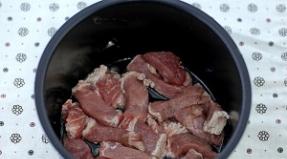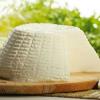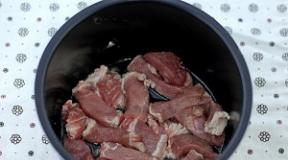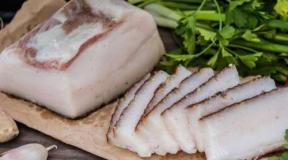The best cheese for rolls. Cream cheese for rolls and sushi
A popular dish of Japanese cuisine, one of the varieties of sushi is rolls, which are rolled into a cylindrical roll using a bamboo mat (makisu), and then cut into 6 or 8 slices. The filling is wrapped in a sheet of nori - dried and crushed pressed seaweed, less often with omelette, rice or soy paper. Sushi and rolls are prepared with lightly salted, smoked, raw fish, seafood, fruits and vegetables, smoked chicken, bacon, and various types of cream cheese.
What kind of cheese is used for rolls?
One of the most important ingredients in almost every roll recipe is cream cheese. The most popular one used to prepare Japanese dishes is Philadelphia. It can be difficult to purchase this cheese for rolls, because... it has a high price. It can be replaced with a similar product. The closest in taste and consistency are soft curd cheeses, for example Almette, Mozzarella, Buko or Mascarpone.
Such cheeses are cheaper than their American counterpart, their soft texture and delicate taste fit well into the recipe of classic rolls. If the accuracy of the rolls does not play a big role, then you can add processed cheese “Viola”, “President”, even Yantar or Brynza. When using a processed product, it is recommended to choose the classic version, without additives, so as not to overpower the taste of the Japanese dish.
Cream cheese for sushi
A soft, delicate, sweetish product made from milk with a pronounced taste - cream cheese for Philadelphia rolls. It has a creamy consistency and does not undergo a ripening period, which makes it different from other soft cheeses (brie). The product contains many vitamins B, A, E, K and minerals: magnesium, calcium, fluorine, potassium, iron, selenium. The calorie content of cream cheese is 340 kcal per 100 g of product, due to its high fat content. Almost every country produces such cheese; in addition, certain types of it can be prepared at home.
This product belongs to soft varieties that do not undergo the ripening process. To prepare it, the milk is first pasteurized, then cooled and a special lactic acid starter is added. The process of separating whey from curd clots takes 20-22 hours. After this, the mass must be strained, then add the remaining ingredients according to the recipe. This type of cream cheese began to be produced in the city of Philadelphia, USA in the 1870s, and since then the product has not lost its popularity.
Due to the production technology, Philadelphia can be stored for up to 4 months, after opening the package - no more than a week. It contains choline, which normalizes cholesterol levels, potassium, necessary for the normal functioning of the cardiovascular system, calcium and phosphorus, necessary to strengthen bone tissue. The calorie content of the product is 341 kcal per 100g. Philadelphia rolls are not the only type of Japanese delicacy where such creamy cheese is added.
Making sushi cheese at home makes a tasty and inexpensive substitute for Philadelphia. For this you will need the following ingredients:
- milk – 1 l.;
- fat kefir – 0.5 l.;
- sugar – 1 tsp;
- salt – 1 tsp;
- egg – 1 pc.;
- citric acid - on the tip of a knife.
Boil milk in a saucepan, stirring constantly, add lemon, salt and sugar, remove from heat. Pour in kefir and mix well. The milk will curdle immediately. Fold clean gauze in two or three layers and place in a colander. Carefully pour the milk mass there, tie the ends with a rope and hang for 6-7 hours. Cheese rolls can be made with another Philly substitute. Mix the fatty cottage cheese with cream in a blender and bring to the desired thickness.
The birthplace of this product is Italy, although it is also produced in other countries - Spain, Russia, France, etc. To prepare the product, goat, cow, sheep, and buffalo milk is used. The peculiarity of Ricotta is that it is made from secondary raw materials, that is, from whey that remains after the production of other cheeses. It is pasteurized and combined with a special acid, then brought to a boil to form curd flakes. The last stage is the separation of whey from the curd mass - the future Ricotta. To obtain 100 g of cheese, you will need the following ingredients:
- whey – 4 l.;
- vinegar 6% – 60 ml.
Cooking method:
- Heat the whey to a temperature of 90 degrees, stirring continuously.
- Remove it from the heat, pour in the vinegar.
- The process of separating the curd flakes, which will float to the surface, will immediately begin.
- These clots need to be caught with a slotted spoon and placed on a sieve lined with gauze.
- Leave for 1.5 hours to make the cheese tender, 7 hours for thick ricotta.
- Store for no more than a week.
In addition to calcium, which is usual for dairy products, Ricotta contains vitamin A, necessary for good vision, and B vitamins, which normalize the functioning of the nervous system. It is recommended to use Ricotta for children, adolescents, pregnant and lactating women, and the elderly. The calorie content of the product is only 145 kcal per 100 g, so it can be consumed by overweight people.

It was first prepared in Italy. Italian Mascarpone contains essential amino acids that are involved in the process of hematopoiesis and strengthening the immune system, tryptophan, which helps normalize the nervous system, effectively combat depression, stress, insomnia, as well as vitamins and minerals. Mascarpone is a high-calorie product - 405 kcal per 100 g.
The recipe for making cream cheese is simple: 1 liter of 25% cream is heated, but not boiled, add 3 tbsp. lemon juice, simmer over low heat for 3-5 minutes. The mass is placed in special fabric or gauze bags and hung to get rid of the whey - this takes 12-15 hours. Mascarpone has a delicate creamy taste and creamy consistency, so it is often used for making desserts, snacks, and sandwiches.

Feta
This cheese is a semi-hard variety and looks like pressed cottage cheese. It is prepared from a mixture of sheep and goat milk, the fat content ranges from 33 to 65%. Feta has a sour-salty taste, with a delicate milky aroma. Greece is considered the birthplace of cheese, but most countries in the world produce it. The product is made in large pieces, which are then cut into portions. The calorie content of Feta cheese is 255 kcal per 100 g of product.
The technology for making Feta is simple: milk is pasteurized so that it curdles, then filtered using special bags for several days. The resulting mass is laid out in special forms, salt, spices and marinade are added. The next stage is pressing and then ripening the cheese for 14 days. The density of the product does not allow you to break it with your hands or spread it on toast like butter.
Ingredients for making Feta at home:
- milk – 2 l.;
- natural sour cream – 200 ml;
- pepsin – 1g;
- distilled water - 1 tbsp.
Cooking method:
- Divide the milk into 2 parts.
- Heat half to 38 degrees, mix the other half with sour cream.
- Dissolve pepsin with water and add to the milk-sour cream mixture.
- Mix both parts of milk and leave for 6-7 hours at room temperature.
- Strain, wrap the resulting mass in gauze, and place under a press for 12-14 hours.
Feta cheese contains choline, which prevents the formation of cholesterol plaques and increases the cell defense mechanism. In some experiments in the USA, it was proven that cheese contains microorganisms that are capable of producing natural antibiotics in the human body. They contribute to a speedy recovery from dysbacteriosis and food poisoning.
Feta contains iron, which is actively involved in the process of oxygen transport, strengthens the immune and cardiovascular systems. Vitamin B2 helps slow down the aging process of the body and prevents the development of degenerative diseases - Alzheimer's, Parkinson's. Tryptophan promotes the formation of the “happiness hormone” - serotonin, which improves mood and normalizes sleep.

The creamy taste and delicate texture of Philadelphia cheese appeals to many lovers of sushi and rolls, cottage cheese desserts and berry cakes, the recipe of which contains this cheese. But it is not always possible to purchase such a product in any store, and the cost of cheese is very high.
Philadelphia is one of the brands of cream cheese that has become popular around the world thanks to Kraft Foods and is a premium product. But there are many producers of cream cheese on the dairy market, so it is obvious that housewives often have the question of what can replace Philadelphia cream cheese, and how to choose both a decent and budget option.
Philadelphia Substitute: Cream Cheese Assortment
Cream cheese has a delicate creamy aftertaste, milky aroma and incredibly light consistency. It may taste sweet and does not contain any additives. Or it can be additionally enriched with herbs, herbs and garlic. Therefore, the choice of cheese depends on what dish you will use it in.

Philadelphia cheese gives a special taste not only to snack canapés, rolls and cheesecakes, but also makes ordinary zucchini and eggplant rolls a real culinary masterpiece.
If you are unable to find Philadelphia cheese on supermarket shelves, you can safely buy one of the following types of cream cheese:
- Cheese Almette. This cheese is produced in Poland using modern technologies. There are several types of cheese: classic with a creamy taste, as well as with the taste of porcini mushrooms, yogurt, garlic, basil, herbs and cucumbers. The cheese is made exclusively from uncanned milk. The fat content of the product ranges from 60 to 70%. Product weight 150 g.
- Cheese Syrko from Mlekar Sabac. Produced in Serbia in packs of 100 g. Product fat content 60%. The cheese is available in two types: without additives and with the taste of cucumber and dill. This cheese is most similar to Philadelphia in taste and texture and is ideal for making sushi. In addition to its low price, cheese has another advantage. It does not contain sucrose.
- Mascarpone Cream Cheese from Zanetti. The cheese is produced in Italy and packaged in 250 g and 500 g packaging. This type of cheese is suitable for preparing sweet dishes, such as tiramisu, cheesecake, fruit and berry desserts. Has a fat content of 80%.
- Cheese Cremette from Hohland. This cheese from a German manufacturer is a full-fledged analogue of Philadelphia. It is sold in large 2 kg packages and is suitable for dishes such as cold-cooked desserts based on curd mousse, sushi rolls, and fish dishes. Fat content is 65%.
- Cream cheese Frischkase from Hallbauer. The cheese is produced in Germany. Made from goat milk and available in two versions: classic (24.5% fat) and with herbs (23.5%). The package contains 300 g.
- Cheese Buko from Arla Foods. Curd cheese is made from Danish milk and was specially created for confectionery and culinary establishments. It has a fresh aroma and a gently sour aftertaste. Cheese is sold in packages of 1.5 and 3 kg.
- Cheese Tasty Fresh from Milkana. This cheese is produced at a French enterprise and has a whole line of unusual tastes. Cream cheese is suitable for making sushi and desserts. And cheese with the flavor of salmon, nuts, porcini mushrooms, Provençal herbs and horseradish is perfect for canapés.
- Cream cheese “Classic” from President. A Ukrainian-made product intended for making sushi. Available in kilogram packages with a fat content of 24.5%.

Advice! The assortment of cream cheeses is quite large, so when choosing a substitute for Philadelphia, pay attention to the labeling. It should indicate that the cheese is soft, creamy or curd.
Homemade Philadelphia Recipes
You can make homemade Philadelphia cheese using heavy cream, sour cream or cottage cheese. By following simple recipes, you can prepare an excellent cheese mass for filling caviar tartlets, making sushi or cheesecake.
Milk kefir Philadelphia
- Pour 2 liters of milk into a saucepan. Add 2 tsp to it. salt and sugar.
- When the milk begins to slowly boil, pour 4 tbsp into it. kefir. Stir the resulting mixture quickly.
- After 1.5-2 minutes, when the milk has curdled, remove the saucepan from the stove.
- While the milk cools slightly, take a colander and line it with clean gauze, folded two or three times.
- Drain the curdled milk in a colander and leave for 15-20 minutes to remove all excess liquid.
- Meanwhile, take 2 eggs and beat them with citric acid on the tip of a knife.
- Remove the cottage cheese from the gauze and mix with the egg mixture.
This cheese will be universal for any dish.

Curd Philadelphia
- Take 200 mg of cream (at least 30% fat) and whip it.
- Grind 500 g of fine-grained soft cottage cheese with a spoon or blender to a homogeneous plastic structure.
- Combine cream and cottage cheese, and then add 200 thick sour cream to them.
- If you need cheese for sushi or snack sandwiches, you can add salt, herbs or herbs to it.

If you dream of preparing some interesting dish that includes Philadelphia cheese in the recipe, do not give up due to the lack of this ingredient. After all, you now know what you can replace it with or prepare it yourself.
Exotic oriental dishes - rolls and sushi have long been deliciously prepared not only in Japanese restaurants, but also at home. However, the components of many recipes often have a high price, so you have to look for a replacement for the expensive products necessary for preparing the dish, and there is always one. So this time, instead of expensive Philadelphia cheese, you can easily prepare homemade cheese that replaces it, but is not inferior in taste.
Before making Philadelphia cheese at home, you will need to take simple products that are in every refrigerator, these are milk (it is better if it is natural - 1 l), regular kefir (0.5 l), egg (1 pc.) , salt and sugar (1 teaspoon each) and a couple of grams of citric acid. The process of making Philadelphia cheese is not at all complicated. To do this, take an enamel pan, pour milk into it and bring to a boil. Then add salt, sugar and kefir to the milk - mix everything well and leave for 5 minutes on low heat.
Those who know how to make curd cheese remember that the curdled mass must be thrown onto gauze folded in half or onto a fine sieve, in this case the same must be done. The mixture is left for 20-30 minutes until all the liquid comes out of it. During this time, you need to beat the egg with a mixer until thick foam and add a little citric acid. When the curdled milk swells, it is mixed with the egg mixture.
At the end, you will need to put the prepared product in a small bowl prepared in advance and put it in the refrigerator. In just 1.5-2 hours it can be used to prepare sushi or other exotic dishes. There are many unusual combinations in exotic oriental cuisine - here you can find the most unusual recipes and recommendations and learn how to eat blue cheese, which for many is an unusual taste experiment.
Philadelphia cheese for sushi can also be prepared using another, simpler recipe. To do this, you will need to take 500 grams of 20% sour cream and pour it into a fine sieve, cover and leave to swell. When there is no time to wait, you can leave it for an hour, and when there is no reason to rush, it is advisable to leave the sour cream to swell overnight in the refrigerator. After that, add a little salt to the hardened mass and beat, after which homemade Philadelphia cheese is ready to eat!
Philadelphia cheese turns out to be unusually tender and pleasant to the taste. If someone is interested in how to make mascarpone cheese at home, we can recommend using the recipe for making Philadelphia cheese as a basis. In order for a homemade product to retain its taste for a long time, you need to know how to properly store cheese. It is recommended to use soft cheese after preparation within 2 days, and it can only be stored in the refrigerator - in a separate, tightly closed container.
Many people love rolls or, as they are also called, “rolls” in the Japanese style. Having learned how to properly boil and season rice, girls and young people prepare sushi rolls and gunkans for holidays or parties. To help lovers of homemade sushi and rolls, a small selection of fillings for sushi and rolls at home.
1.Cucumber + cream cheese
This filling for rolls at home with a photo is very popular. Cut the cucumber lengthwise, and use a spoon to select the seeds (this is important so that the filling does not “flow”), then cut it into strips along the entire length, for one roll you will need 2-3 “strips” » cucumber, this is approximately 1/5 of the total vegetable.
You can take the most ordinary cream cheese, processed, which is sold in trays, but in sushi bars they usually use Philadelphia-type cream cheese; its inexpensive analogues are sold under the brands “cream cheese” and “curd cheese” from different manufacturers and in regions cost from 40 to 100 rubles per 90-100 grams.
By the way, on the Culinary League website there is a recipe for curd cream cheese, which can be safely used to make rolls. Here he is:
Cottage cheese
Curd cheese is a wonderful snack, but besides this, it can be added to baked goods and pancakes as a filling, and creams and sauces can be prepared using curd cheese. The famous Philadelphia cheese and Mascarpone cheese are a type of curd cheese. You can make your own diet curd cheese at home, which will be an excellent source of protein for those on a diet.
2. Avocado + bell pepper + lettuce + cheese
The avocado should be of medium density so that it is soft, but not into porridge. Remove the peel and cut it in half lengthwise. This fruit oxidizes and darkens in air, like an apple. In order to preserve its color, the cut can be greased with lemon juice. Wrap the half of the avocado that you are not working with in stretch wrap and leave it out of the refrigerator.
We cut the avocado and pepper into slices along the fruit to make sticks; by the way, you can also add a cucumber to this set, peeled as described above. Roll the lettuce leaf into a tube the width of the nori sheet. To make the taste more rich, add suluguni cream cheese in strips. We split the strip into 4 pieces with our fingers and use one. You get a lot of filling if you cut it into thin plastic pieces, so tighten the roll harder.
3. Mussels + squid + spicy sauce
This homemade sushi filling with mussels and squid photo will appeal to men as it has a spicy note. Take mussels in brine (frozen ones will taste bland) and boiled squid (peeled and not overcooked). Cut the squid into thin strips. We lay the mussels in a path, next to the squid. To prevent the roll from being bland, add hot sauce. To do this, mix light mayonnaise and chili sauce (chili ketchup) in equal proportions. You need to pour this sauce over the filling path at your discretion. For those who don’t like hot sauce, we suggest taking ready-made sauce in “Tartare” or “1000 Islands” packaging or cheese sauce.
4. Fish + teriyaki + cucumber
White fish fillet with dense flesh (any kind, but preferably not too small), fry, when cool, disassemble into pieces of pulp. Place them in a row and then add the peeled cucumber and pour teriyaki sauce over it. We prepare teriyaki from soy sauce and sugar, boiling it to a caramel state (it’s not difficult). You can also pour the sauce on top (it tastes like an imitation of eel rolls).
5. Crab meat (in a stick) + avocado
Buy “snow crab” crab sticks, they have the taste and texture of crab meat, cut one stick in half lengthwise and you will get a portion of the filling for one roll. If you made rolls with avocado and you have some left over, feel free to add it. In general, avocado is added to most rolls, so add it to your rolls without fear; it goes well with most sushi products.
6. Salmon + omelet + cheese
Fry an omelette from 1 egg (add a little soy sauce when beating the egg); the rolls use a puff tomago omelette, but you can get by with an ordinary one. Cut the omelette into long strips and place them in the first row of filling. Use lightly salted, home-cooked salmon (there is a recipe on our website Lightly salted salmon) or purchased. We also cut the salmon into slices and place them in the second row of filling. A better choice of cheese would be cottage cheese, which was mentioned earlier, or creamy suluguni.
Important... for the filling for rolls and sushi, one medium (closer to large) roll needs from 30 to 50 grams of filling on average. One half of an avocado is enough for 5-6 rolls, one cucumber is enough for 4-5 rolls, an omelet from 1 egg is enough for 3-4 rolls. Take this into account when planning the amount of ingredients! Have a great creativity!
The delicate taste of Philadelphia cheese is familiar and loved by many connoisseurs of sushi and rolls, cheesecakes and simply delicious cakes, the recipe for which contains this cheese in the cream.
However, not every store can buy this product and, moreover, the price of cheese is quite high.
Therefore, the question arises of how to replace Philadelphia cream cheese in cream, cake and other dishes. Find a decent and budget-friendly alternative to expensive cheese.
The worst replacement option is ordinary inexpensive soft processed cheeses such as “Druzhba” and “Yantar”.
Perhaps processed cheese will work for making rolls (although it’s unlikely, the taste won’t be the same anyway), but you can’t make a good cheesecake with it. Some housewives put soft unsalted feta cheese or Fetaki cheese in their rolls instead of cream cheese.
But, to be honest, nothing can replace Philadelphia cheese for cheesecake, sushi, rolls and other dishes. It is unique, and the taste of the dish will differ from the original.
And it’s very frustrating that sushi bars and restaurants often add other cheap cheeses instead in order to save money.
You can also try replacing Philadelphia cream cheese with other curd cream cheeses to suit your taste, because everyone’s preferences are different.




















